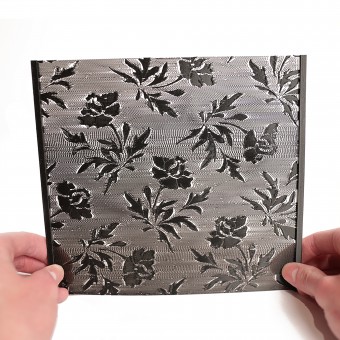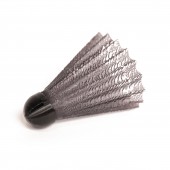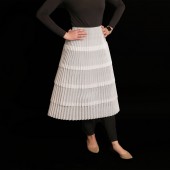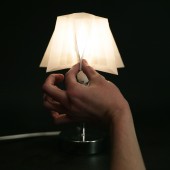DefeXtiles Textile Fabrication by Jack Forman |
Home > Winners > #112633 |
 |
|
||||
| DESIGN DETAILS | |||||
| DESIGN NAME: DefeXtiles PRIMARY FUNCTION: Textile Fabrication INSPIRATION: For thousands of years, the manufacturing of textiles into shaped forms has remained largely the same; fiber becomes a fabric which is then constructed into a 3D object. The high-tech approach, machine knitting, uses expensive machines with a significant learning curve for use. The low-tech approach, classic sewing, requires painstaking processes. As such, there is a need for a fast and accessible approach to manufacture textiles into 3D forms. UNIQUE PROPERTIES / PROJECT DESCRIPTION: DefeXtiles is a rapid and low-cost technique to produce realistic high-fidelity textiles on 3D printers. In this work, we demonstrate that under-extrusion defects can be finely controlled to quickly print thin flexible textiles into complex 3D shapes. Our approach enables a myriad of applications including printing full sized garments, deformable tangible interfaces, and ultra-tough shuttlecocks. OPERATION / FLOW / INTERACTION: This work has introduced a new approach to quickly print thin, flexible textiles composed of common 3D printing ma-terials with an unmodified 3D printer. Our approach com-bines the flexible, thin, and breathable properties of textiles with the affordances of 3D printing: rapid iteration, hands-free fabrication, and computer aided design. Through char-acterization, we demonstrate how our approach enables tun-ing of the mechanical and aesthetic properties through mate-rial and parameter selection. Through a series of applica-tions, we demonstrated the potential applicability of our approach for smart textiles, tangible online shopping, toys, fabric design, and everyday life. PROJECT DURATION AND LOCATION: Started in October 2019 in Cambridge Massachusettes, and finished in June 2020. The work will be presented and demoed at the ACM User Interface Software and Technology Symposium 2020. |
PRODUCTION / REALIZATION TECHNOLOGY: In this paper, we demonstrate that under-extrusion can be leveraged to quickly print thin, flexible, textiles. Specifically, as the extrusion multiplier decreases, there exists an ideal regime where globs form with fine strands connecting them. The periodic gaps that arise from printing this way not only yields textile-like aesthetics and breathability, but also textile-like properties such as flexibility and stretchability even with classically rigid materials such as polylactic acid (PLA). SPECIFICATIONS / TECHNICAL PROPERTIES: - TAGS: textile, 3d print, lace, advanced manufacturing, fabric RESEARCH ABSTRACT: We present a new strategy, called DefeXtiles, to 3D print quasi-woven fabrics that are thin, flexible, and fast to fabricate. Since our approach prints the textiles perpendicular to the print bed, complex geometries can be produced including pleated, curved, and metamaterial structures. With our approach, a standard 3D printer can print decameters of fabric in a single print. The use of multi-material printers allows users to embed circuit traces into the textile via conductive filament. CHALLENGE: To democratize access and ability to make 3D forms with textiles by developing a new technique that allows textiles to be 3D printed into complex 3-dimensional forms using unmodified commodity 3D printer and no new software. ADDED DATE: 2020-10-01 01:41:52 TEAM MEMBERS (2) : Jack Forman, Mustafa Doga Dogan, Hamilton Foryseth and Hiroshi Ishii and IMAGE CREDITS: Jack Forman, 2020. |
||||
| Visit the following page to learn more: https://www.media.mit.edu/projects/defex |
|||||
| AWARD DETAILS | |
 |
Defextiles Textile Fabrication by Jack Forman is Winner in 3D Printed Forms and Products Design Category, 2020 - 2021.· Press Members: Login or Register to request an exclusive interview with Jack Forman. · Click here to register inorder to view the profile and other works by Jack Forman. |
| SOCIAL |
| + Add to Likes / Favorites | Send to My Email | Comment | Testimonials | View Press-Release | Press Kit |







